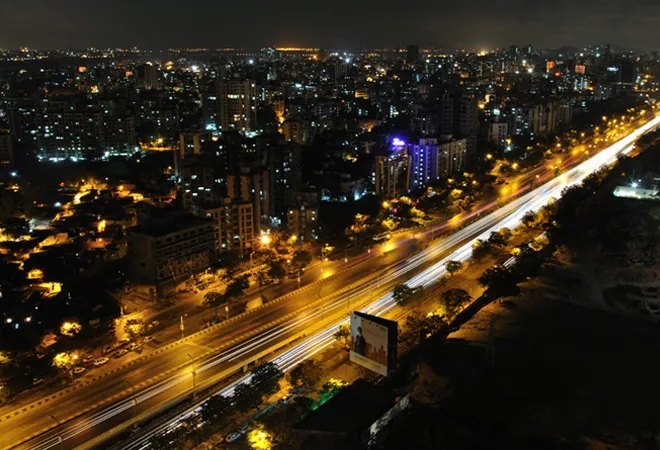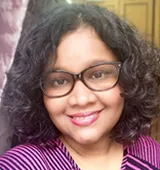-
CENTRES
Progammes & Centres
Location

With the Mumbai Commission for Art, Music and Culture (MCAMC) taking off in August 2018, the debate for integrating urban art and design in our cities has taken centre stage. This commission goes beyond the scope defined by the Delhi Urban Art Commission (DUAC), and looks into the intertwining of culture, music and art in the city.
As we embark on such city specific programmes, there seems to be a need for defining a national urban art and design programme, that could foster a sense of pride, social interactions and community cohesion across cities in India.
The DUAC, which was set up in 1974, is a policy advisory board, regulatory body and think tank set up for ‘preserving, developing and maintaining the aesthetic quality of urban and environmental design within Delhi’. It provides advice and guidance to any local body in respect of any project of building operations or engineering operations or any development proposal which affects or is likely to affect the skyline or the aesthetic quality of the surroundings or any public amenity. For the past 4 decades, DUAC has tried to fulfil this role, and its impact is seen in certain areas in New Delhi, which are aesthetically maintained. But much is left desired.
While planning new cities or even refurbishing cities through several central government programmes, the ideas discussed are always centred around issues of increasing productivity and laying new infrastructure to improve the way people commute and get their services. No emphasis is laid on how a particular metro line would look, art and aesthetics of signages, street furniture are never a consideration. We never seem to give a thought to simple things like imagining civic garbage trucks differently, and also how citizens can be involved in preserving art and culture in cities through planned volunteering and informative programmes among other things.
For this purpose, we could look at standardising urban liveability through an Urban Art and Design Index (UADI). An index of this nature will ensure that the quality of cities are quantifiable and measurable, which will then bring in some real change. Cities which score high on these indices should be given funding for any creative project that will enhance the look, feel and quality of living in the city through subtle interventions.
A UADI could be an initiative taken up by the such commissions, determined through a central body, like Niti Aayog or the Urban Development Ministry which will set standards and requirements for different zones and state conditions which will need to be adhered by all authorities for every public space, building or project.
Such standards, with quantifiable indicators, will define the aesthetical requirements of public buildings, set comprehensive street designs that will be incorporated across the city, define requirements for open spaces, heritage and historical districts, among setting other indicators.
The indicators would also cover intangible factors like history, music and culture, that should not only be preserved, but celebrated through involving neighbourhoods and communities in cities, through an annual programme drawn up for this purpose. It should also make it mandatory for inclusion of school and college students in activities related to such art, history and culture.
As seen through examples of Singapore, Mexico, New York and other successfully developed cities giving high living standards, art and design is an integral part of area regional planning. These projects must weave in the aspect of urban design and also allocate funds to ensure that these newly developed areas will be aesthetically rich and visually pleasing.
As a pilot project, the Government of India could target the Mumbai Metropolitan Region (MMR) as the first to have the UADI, and set stage for other metropolitan areas. This is because MMR is arguably the fastest growing region in Maharashtra with an interesting mix of an already existing megapolis, two big sister cities, new smart city projects, business hubs and multi-modal corridors being set up here. This is the right time to intervene and incorporate a UADI in each of these regions and projects, so that more sociable and inclusive areas are born, rejuvenated and finally nurtured.
The Mumbai Metropolitan Regional Development Authority (MMRDA) has identified five locations in MMR -- Kanjurmarg, Vasai-Virar, Kalyan, Bhiwandi and Kalwa – to have business hubs on the lines of Bandra Kurla Complex. While Bhiwandi will be made a logistic hub, the nearby Kalyan will be developed with a focus on industry. The business hub at Vasai-Virar is being planned as a tourism zone. These hubs will have commercial and residential complexes so that the walk-to-work culture can be implemented.
Additionally, two major smart city initiatives have been planned for the MMR in Thane and Navi Mumbai. While the City and Industrial Development Corporation (Cidco) has set aside Rs35, 000-crore to develop the southern part of Navi Mumbai as a smart city, the central government has approved a budget of Rs 700 crore to Thane for the smart city project.
If Maharashtra is pitching MMR as the next investment destination of India, and also looking at developing new areas providing a work-life balance, then it will have to up its liveability index. This could be done through setting up a UADI which will make it aesthetically pleasing, creating inclusive and vibrant communities.
The views expressed above belong to the author(s). ORF research and analyses now available on Telegram! Click here to access our curated content — blogs, longforms and interviews.

Sayli UdasMankikar was a Senior Fellow with the ORF's political economy programme. She works on issues related to sustainable urbanisation with special focus on urban ...
Read More +